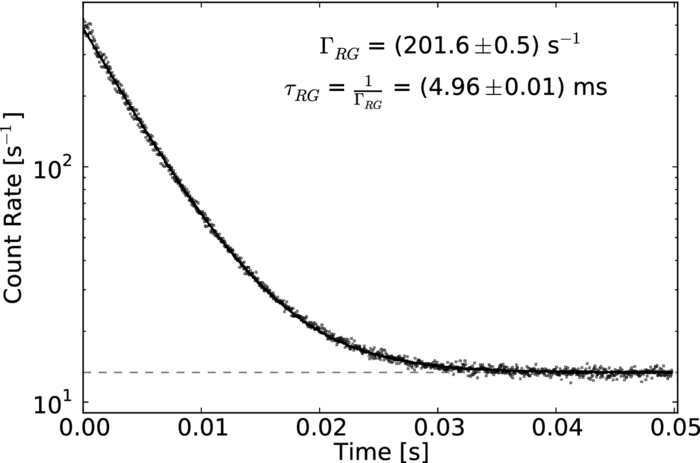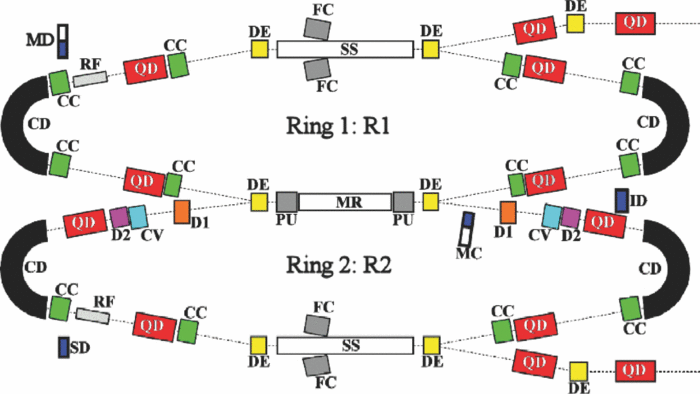Read more here: https://doi.org/10.1103/PhysRevLett.119.073001
Storing keV Negative Ions for an Hour in DESIREE
Read more here: https://doi.org/10.1103/PhysRevLett.114.143003
First storage of ion beams in the Double Electrostatic Ion-Ring Experiment: DESIREE
Read more here: https://doi.org/10.1063/1.4807702
The double electrostatic ion ring experiment: A unique cryogenic electrostatic storage ring for merged ion-beams studies
We describe the design of a novel type of storage device currently under construction at Stockholm University, Sweden, using purely electrostatic focussing and deflection elements, in which ion beams of opposite charges are confined under extreme high vacuum cryogenic conditions in separate “rings” and merged over a common straight section. The construction of this double electrostatic ion ring experiment uniquely allows for studies of interactions between cations and anions at low and well-defined internal temperatures and centre-of-mass collision energies down to about 10 K and 10 meV, respectively. Position sensitive multi-hit detector systems have been extensively tested and proven to work in cryogenic environments and these will be used to measure correlations between reaction products in, for example, electron-transfer processes. The technical advantages of using purely electrostatic ion storage devices over magnetic ones are many, but the most relevant are: electrostatic elements which are more compact and easier to construct; remanent fields, hysteresis, and eddy-currents, which are of concern in magnetic devices, are no longer relevant; and electrical fields required to control the orbit of the ions are not only much easier to create and control than the corresponding magnetic fields, they also set no upper mass limit on the ions that can be stored. These technical differences are a boon to new areas of fundamental experimental research, not only in atomic and molecular physics but also in the boundaries of these fields with chemistry and biology. For examples, studies of interactions with internally cold molecular ions will be particular useful for applications in astrophysics, while studies of solvated ionic clusters will be of relevance to aeronomy and biology.
Read more here: https://doi.org/10.1063/1.3602928




